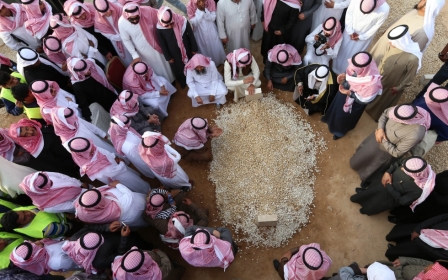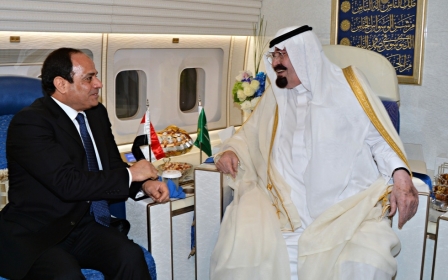FACT SHEET: Saudi Arabia

Saudi Arabia, whose ruler King Abdullah died on Friday, is an oil-rich, absolute monarchy that occupies most of the arid Arabian peninsula.
It is also home to the two most holy sites in Islam and is a pilgrimage destination for Muslims from all over the world.
GEOGRAPHY: Saudi Arabia dominates the Arabian Peninsula, lying between the Gulf and the Red Sea. Mostly desert, it is bordered to the south by Yemen, the east by Oman and the Gulf emirate states, and to the north by Jordan and Iraq.
AREA: At 2,149,690 square kilometres (about 860,000 square miles), the country is approximately four times the size of France.
POPULATION: 28.83 million (2013), including around eight million foreign nationals.
CAPITAL: Riyadh.
RELIGION: Sunni Islam is the official religion, although about 10 percent of Saudis are Shiites. Followers of faiths other than Islam are banned from practising in Saudi Arabia, which is home to the Islamic holy cities of Mecca and Medina.
HISTORY: Bedouin prince Muhammad bin Saud allied himself in 1744 with fiery cleric Muhammad bin Abdul Wahhab to forge a new state. By 1802 they controlled the lands that mostly make up Saudi Arabia, but lost much of it to the Ottomans in 1818.
Abdulaziz bin Saud captured Riyadh in 1902 and declared himself king in 1932. Oil was discovered in 1938. Abdul Aziz died in 1953, and a succession of his sons have ruled since. King Abdullah bin Abdulaziz inherited the throne in 2005.
Between 2003 and 2006, the kingdom witnessed a wave of al-Qaeda attacks, including some targeting foreigners.
In recent years there have also been protests and limited confrontations with police in mainly Shiite regions of the east, while women have campaigned for basic rights, such as being allowed to drive.
In a bid to quell the wave of uprisings known as the "Arab Spring" in 2011, King Abdullah banned all protest and announced $36 billion of social benefits.
In September, Saudi Arabia and other Gulf countries joined the US-led air campaign against the Islamic State group that seized swathes of Iraq and Syria.
POLITICAL INSTITUTIONS: An absolute monarchy, with senior princes of the al-Saud family holding the most powerful ministerial positions, all provincial governorships and top military jobs.
The Shura Council makes recommendations on legal and policy issues. There is no constitution and law is based on Islamic sharia in the ultra-conservative Wahhabi-Hanbali tradition.
Judges are clerics schooled in Islamic law.
ECONOMY: At 265.4 billion barrels, Saudi Arabia possesses the second-largest known reserves of crude oil in the world, after Venezuela.
A close ally of the United States, it is a leading member of the Organization of Petroleum Exporting Countries and often acts to regulate world oil prices by adjusting its output.
Saudi Arabia also has significant quantities of natural gas.
The government has pushed to diversify by building petrochemical plants and energy-intensive heavy industry. Pilgrims also fuel an economy which is heavily reliant on foreign workers.
GDP: $745.3 billion in 2013; per capita gross national income: $26,200 in 2013 (World Bank, 2014).
MILITARY: 233,500 active duty personnel (IISS, 2012).
Middle East Eye propose une couverture et une analyse indépendantes et incomparables du Moyen-Orient, de l’Afrique du Nord et d’autres régions du monde. Pour en savoir plus sur la reprise de ce contenu et les frais qui s’appliquent, veuillez remplir ce formulaire [en anglais]. Pour en savoir plus sur MEE, cliquez ici [en anglais].




